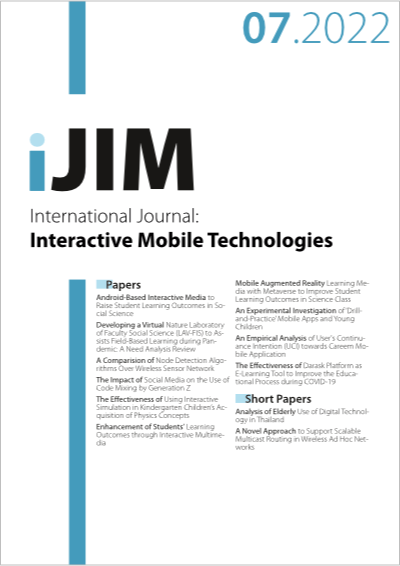A Comparision of Node Detection Algorithms Over Wireless Sensor Network
DOI:
https://doi.org/10.3991/ijim.v16i07.24609Abstract
MANET is standing for Network as Mobile Ad-hoc which is a self-directed mobile handlers group which communicates over relatively bandwidth constrained wireless channels. Many services with different classes of Quality of Services (QoS) could be provided through the MANET such as data, voice, and video streaming. Thus, efficient packets routing is an essential issue especially over this kind of burst channel. To settle this issue, many scheduling techniques are proposed to reduce the packets dropping and channel collision when a huge demand of data is transferred from a sender to a receiver. In this paper, four MANET scheduling algorithms are selected and investigated in mobile ad hoc network which are Strict Preference (SP), Round Robin (RR), Weighted Round Robin (WRR), and Weighted Fair (WF). The network simulator EXata 2.0.1 is used to build the scenario which is consist of 50 nodes and performed the simulation. The results showed the performance metrics difference of the network such as the throughput and the end-end delay as well as queuing metrics like peak queue size, average queue length, in queue average time, and droppe of whole packets. Regrading throughput, the SP algorithm has a greater throughput than WF, RR, and WRR by 4.5%, 2.4%, and 1.42%, but WRR has outperformed others regarding the end-end delay. Moreover, WRR represents the best scheduling algorithm regarding both peak queue size since its greater than RP, WF, and WRR by 10.13%, 9.6%, and 5.32%, in order, and average output queue length in contrast, WRR worsts more time in queuing but it is the best in preventing the packets from dropping.
Downloads
Published
2022-04-05
How to Cite
Mahdi, H. F., Alwan, M. H., AL-Bander, B., & Zuhair, A. . (2022). A Comparision of Node Detection Algorithms Over Wireless Sensor Network. International Journal of Interactive Mobile Technologies (iJIM), 16(07), pp. 38–53. https://doi.org/10.3991/ijim.v16i07.24609
Issue
Section
Papers
License
Copyright (c) 2022 Dr. Mohammed hasan alwan, Hussain Mahdi, Hussain Mahdi, aws sameen, aws sameen

This work is licensed under a Creative Commons Attribution 4.0 International License.



